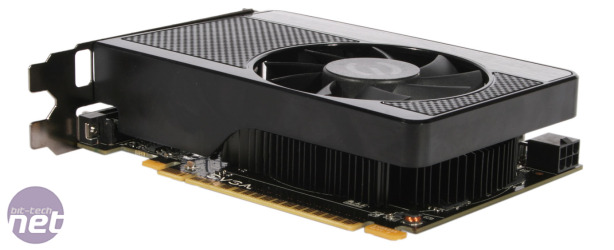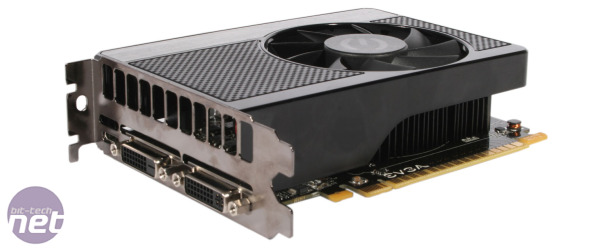Performance Analysis
Gaming at 2560 x 1600 is obviously unrealistic for a card of this calibre, and triple-screen gaming is a wild delusion for anyone without a top-end GPU, unless of course you like your games to resemble CCTV footage from last century. Therefore, while we've left the graphs for 2560 x 1600 and 5760 x 1080 in for comparison's sake, our analysis will be based on the 1920 x 1080 resolution results. With the GTX 650, Battlefield 3 proved to be unplayable at this resolution on the highest settings. It only managed a minimum frame rate of 20fps, 3fps more than the HD 7750, but 3fps less than the HD 7770.A similar story was told by both our Crysis 2 and The Witcher 2 benchmarks, where the GTX 650 could only manage minimum frame rates of 21fps in both games, which again placed it in right in between the two Radeon cards.
Skyrim was the only game in which the GTX 650 was consistently playable, as it never dipped below 27fps. While this equals that of the HD 7750, the HD 7770 had a significant lead on the GTX 650, with a minimum frame rate of 34fps, a whole 7fps more. The small but noticeable lead that the GTX 650 has over the HD 7750 was again apparent in the Unigine Heaven benchmark, which gave the card a score of 582, 8% higher than the AMD card. Again, however, it found itself trailing the HD 7770, whose score of 691 was 19% more than the GTX 650.
On the plus side, the hefty overclock we were able to give the GTX 650 wasn't for nothing. Once applied, it was just able to maintain playable frame rates in Battlefield 3, topping the HD 7770 by a single fps. This result was reflected in the Unigine Heavean benchmark too, where the GTX 650 increased its score by 17% to 684, putting it almost neck and neck with the HD 7770 at stock speeds.
Though the card did consume a fair bit more power than a HD 7750 when we placed it under load (126W compared to 112W for a 14W difference), this is to be expected given that it requires its own 6-pin PCI-E power connection to run. The card's delta T under load of 29°C was the lowest on test by a high margin, which is an excellent result, especially considering that the single 80mm span pretty quietly throughout testing.
Conclusion
With a bit of tinkering, the GTX 650 can handle games at 1920 x 1080 with levels of detail that are impressive for a sub-£100 card. However, the price of the HD 7770 is now the same price as GTX 650, which is a serious blow to the Nvidia card as it was outperformed by the AMD one in almost every test. Only by taking advantage of the (admittedly impressive) overclocking capabilities of the card can the GTX 650 compete with the HD 7770 at its stock speeds.
It's difficult to criticise the lack of SLI support, as using two of these cards would be a silly idea, given that the GTX 660 retails for double the price but offers easily more than double the performance of the GTX 650. Likewise, the HD 7850 can be had for around 50% more at £135 now, but offers almost 100% more performance than the GTX 650.
Though credit is due to EVGA for its cooler design, the reference PCB they've been given to work with has come late to the budget card party, and has suffered for it. The reality is that the HD 7770 is faster across the board and now costs the same. Unless the GTX 650 falls to a price closer to that of the HD 7750, there's little with which to recommend this card at the moment.
-
Value16 / 30
-
Features21 / 30
-
Performance23 / 40


MSI MPG Velox 100R Chassis Review
October 14 2021 | 15:04











Want to comment? Please log in.